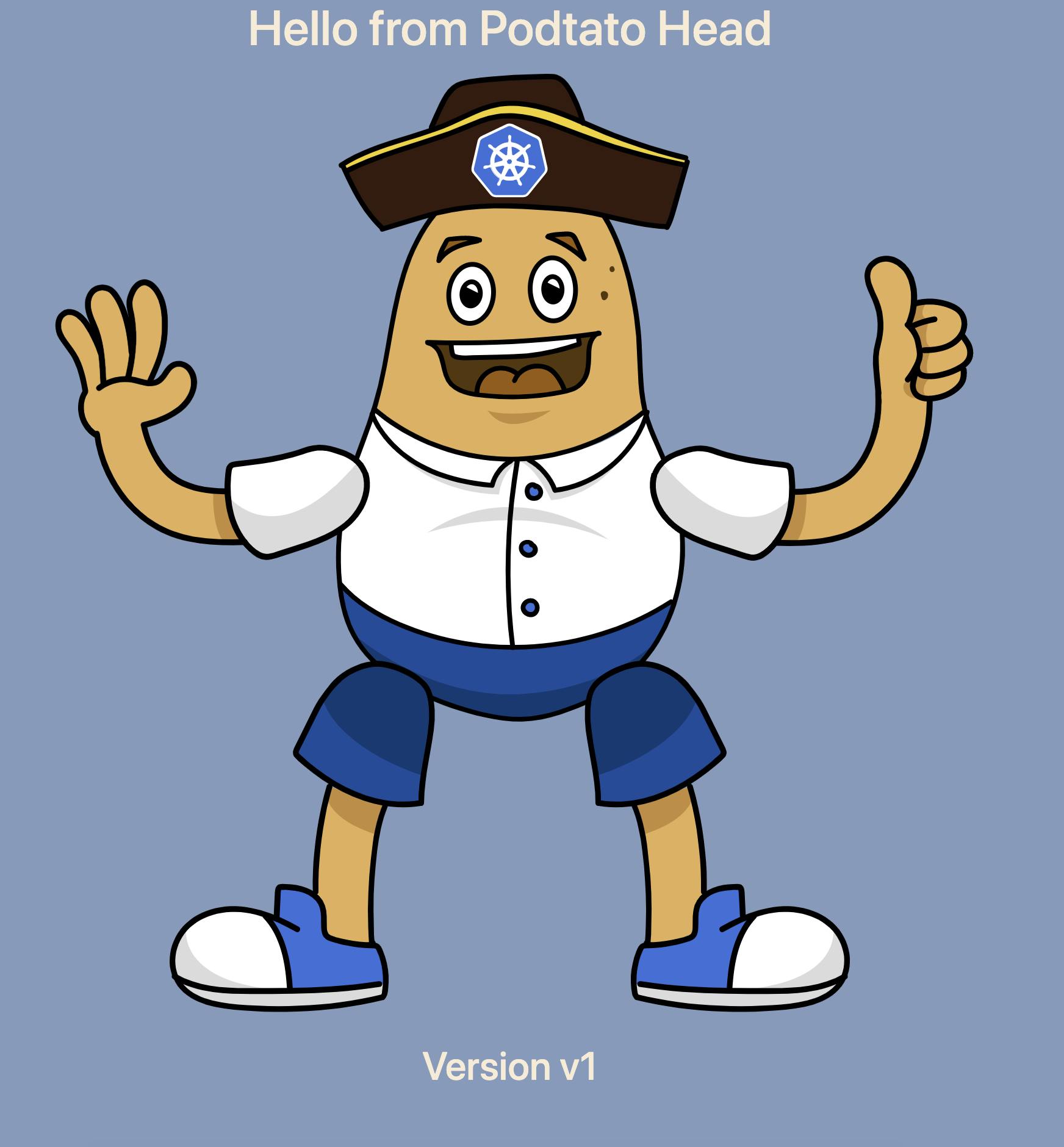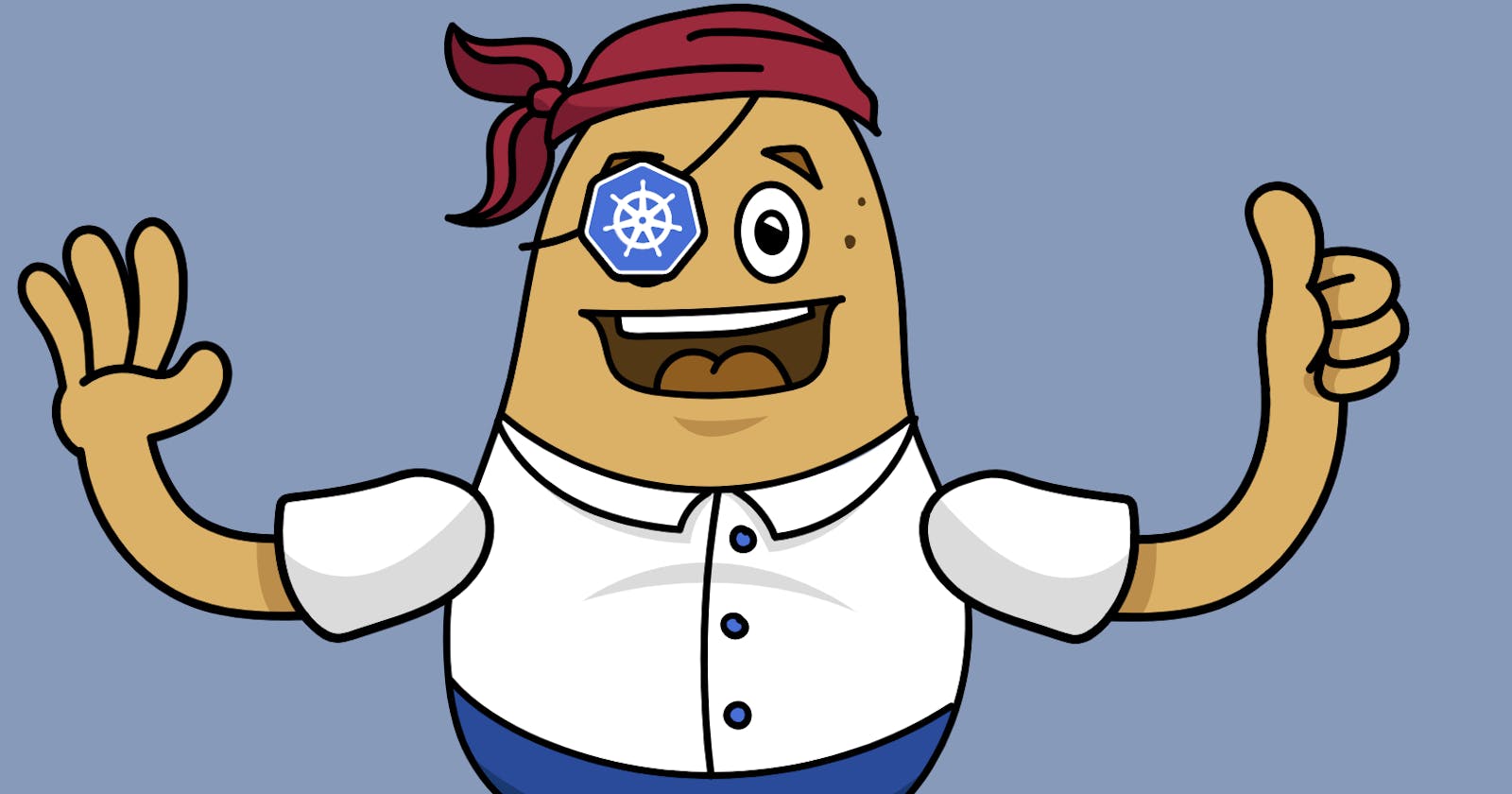Podtato-head, Pulumi and Azure Container Apps
How to use Pulumi with Azure Container Apps
Several great news got announced this week:

And I knew, I had to give it a spin.
Especially the Dapr part of Container Apps draw my attention. Here is a very short intro to all the parts of this little demo and the we start to deploy.

What is Pulumi?
Pulumi is an open source infrastructure as code tool for creating, deploying, and managing cloud infrastructure. Pulumi works with traditional infrastructure like VMs, networks, and databases, in addition to modern architectures, including containers, Kubernetes clusters, and serverless functions. Pulumi supports dozens of public, private, and hybrid cloud service providers.
I use the golang, but there is support for JS/TS, Python, dotnet. I even saw a PR for Java, so plenty of choice for you fellow dev. For more infos just hop onto their website
Azure Native Provider
The Azure Native provider for Pulumi can be used to provision all the cloud resources available in Azure. It manages and provisions resources using the Azure Resource Manager (ARM) APIs.
You can find the API docs to the Azure Native Provider
Podtato-head
We will deploy the 📨🚚 CNCF App Delivery SIG Demo podtato-head
Podtato-head demonstrates cloud-native application delivery scenarios using many different tools and services. It is intended to help application delivery support teams test and decide which mechanism(s) to use.
Azure Container Apps (KEDA, Dapr and envoy)
Microsoft released Azure Container Apps as a public preview during Ignite November 2021. Container Apps allows you to run containerized applications on a serverless platform, No need to take care about the underlying infrastructure.
AKS acts as the control plane with and additional software stack such as:
Dapr helps developers build event-driven, resilient distributed applications. Whether on-premises, in the cloud, or on an edge device, Dapr helps you tackle the challenges that come with building microservices and keeps your code platform agnostic.
KEDA is a Kubernetes-based Event Driven Autoscaler. With KEDA, you can drive the scaling of any container in Kubernetes based on the number of events needing to be processed.
Envoy is used to provide ingress functionality, traffic splitting for blue-green deployment and much more.
So lets roll...

Customize the Podtato-head main service
Service invocation building block
Using service invocation, your application can reliably and securely communicate with other applications using the standard gRPC or HTTP protocols.
Dapr uses a sidecar architecture. To invoke an application using Dapr, you use the invoke API on any Dapr instance. The sidecar programming model encourages each applications to talk to its own instance of Dapr. The Dapr instances discover and communicate with one another.
As we want to use the service invocation from dapr we need to add the go-client sdk to the Podtato-head main service.
See the repo for details -> github.com/dirien/podtato-head
import (
dapr "github.com/dapr/go-sdk/client"
)
The invocation of the method happens with following snippet:
resp, err := client.InvokeMethod(context.Background(), serviceMap[part], "images/"+image, "get")
if err != nil {
http.Error(w, err.Error(), http.StatusInternalServerError)
return
}
After the changes we build the new image of podtato-head and push them into the registry.
dirien/podtato-main:v1@sha256:671a7776e448cdf5de5b01a44812d29137a9e6f9267be1fc919b2d59f69040e7
Write the Pulumi programm

Here is the repo -> github.com/dirien/infrastructure-as-code-wo..
The Pulumi part, is straight forward. Just create a Pulumi project via
pulumi new azure-go --dir pulumi-azure-container-apps
and follow the on-screen steps.
I just check, that the go.mod is up-to-date, and then we are good to go.
The first part of the Pulumi program, is to init the Azure Resource group, the Log Analytics workspace and
the Container App Environment
Now we initialise the Container App for the parts of the podtato-head services.
Important parts to mention are:
- We do not have a external ingress route
External: pulumi.Bool(false), - We set the revision mode to multiple
ActiveRevisionsMode: pulumi.String("multiple"), - We set the scaling rule to
httpandconcurrentRequeststo 20
This will be later quite handy to show the Split Traffic function from Container Apps via the inbuild Envoy
for _, part := range podParts {
podtatoHeadPart, err := web.NewContainerApp(ctx, part.name, &web.ContainerAppArgs{
ResourceGroupName: resourceGroup.Name,
Name: pulumi.String(part.name),
KubeEnvironmentId: kubeEnvironment.ID(),
Configuration: web.ConfigurationArgs{
ActiveRevisionsMode: pulumi.String("multiple"),
Ingress: web.IngressArgs{
External: pulumi.Bool(false),
TargetPort: pulumi.IntPtr(9000),
Traffic: part.traffic,
},
},
Template: web.TemplateArgs{
Containers: web.ContainerArray{
web.ContainerArgs{
Name: pulumi.String(part.name),
Image: pulumi.String(fmt.Sprintf("dirien/%s:%s", part.name, part.version)),
},
},
Scale: web.ScaleArgs{
MaxReplicas: pulumi.IntPtr(5),
MinReplicas: pulumi.IntPtr(0),
Rules: web.ScaleRuleArray{
web.ScaleRuleArgs{
Name: pulumi.String("http-rule"),
Http: web.HttpScaleRuleArgs{
Metadata: pulumi.StringMap{
"concurrentRequests": pulumi.String(20),
},
},
},
},
},
Dapr: web.DaprArgs{
Enabled: pulumi.BoolPtr(true),
AppId: pulumi.String(part.name),
AppPort: pulumi.IntPtr(9000),
},
},
})
if err != nil {
return err
}
ctx.Export(fmt.Sprintf("%s_LatestRevisionName", part.name), podtatoHeadPart.LatestRevisionName)
}
The main "body" part podtato-head services will also be declared.
Important part to mention here is, that we set external ingress route to true via External: pulumi.Bool(true), as we want to access the app from external.
...
mainApp, err := web.NewContainerApp(ctx, "podtato-main", &web.ContainerAppArgs{
ResourceGroupName: resourceGroup.Name,
Name: pulumi.String("podtato-main"),
KubeEnvironmentId: kubeEnvironment.ID(),
Configuration: web.ConfigurationArgs{
Ingress: web.IngressArgs{
External: pulumi.Bool(true),
TargetPort: pulumi.IntPtr(9000),
},
},
Template: web.TemplateArgs{
Containers: web.ContainerArray{
web.ContainerArgs{
Name: pulumi.String("podtato-main"),
Image: pulumi.String("dirien/podtato-main:v1@sha256:671a7776e448cdf5de5b01a44812d29137a9e6f9267be1fc919b2d59f69040e7"),
},
},
Scale: web.ScaleArgs{
MaxReplicas: pulumi.IntPtr(5),
MinReplicas: pulumi.IntPtr(0),
Rules: web.ScaleRuleArray{
web.ScaleRuleArgs{
Name: pulumi.String("http-rule"),
Http: web.HttpScaleRuleArgs{
Metadata: pulumi.StringMap{
"concurrentRequests": pulumi.String(20),
},
},
},
},
},
Dapr: web.DaprArgs{
Enabled: pulumi.BoolPtr(true),
AppId: pulumi.String("podtato-main"),
AppPort: pulumi.IntPtr(9000),
},
},
})
...
Now we can run pulumi up to see how the infrastructure gets deployed. Maybe you need to run first an az login to get the credentials for your azure subscription.
Outputs:
LatestRevisionFqdn : "https:/podtato-main--f6gz3h8.whitedesert-efebec22.northeurope.azurecontainerapps.io"
LatestRevisionName : "podtato-main--f6gz3h8"
podtato-hats_LatestRevisionName : "podtato-hats--lhmqyw0"
podtato-left-arm_LatestRevisionName : "podtato-left-arm--h5q7fns"
podtato-left-leg_LatestRevisionName : "podtato-left-leg--dxfrjc1"
podtato-right-arm_LatestRevisionName: "podtato-right-arm--tkxzyws"
podtato-right-leg_LatestRevisionName: "podtato-right-leg--0dsjksm"
Keep an eye on this revision names. We will use them right now. If everything works well you should see our podtato-head man with a funny pirate head, when you call the URL in your browser

So let us change the tag of the head in our main.go to v1 and re-apply the Pulumi program.
...
{
"podtato-hats",
"v1",
},
...
The hat changed, and with the hat also the revision name. We can now split the traffic applied by assigning percentage values among the different revisions.
Add following properties to the hat struct
web.TrafficWeightArgs{
RevisionName: pulumi.String("podtato-hats--lhmqyw0"),
Weight: pulumi.IntPtr(50),
},
web.TrafficWeightArgs{
LatestRevision: pulumi.BoolPtr(true),
Weight: pulumi.IntPtr(50),
},
And re-apply the Pulumi program. you should now see, when you refresh a that the traffic gets from the current service to
the old one. The effect are most of the time a new hat of podtato-head man

In the Azure Portal you should see following view

Housekeeping
With pulumi destroy can we clean up the whole deployment.


